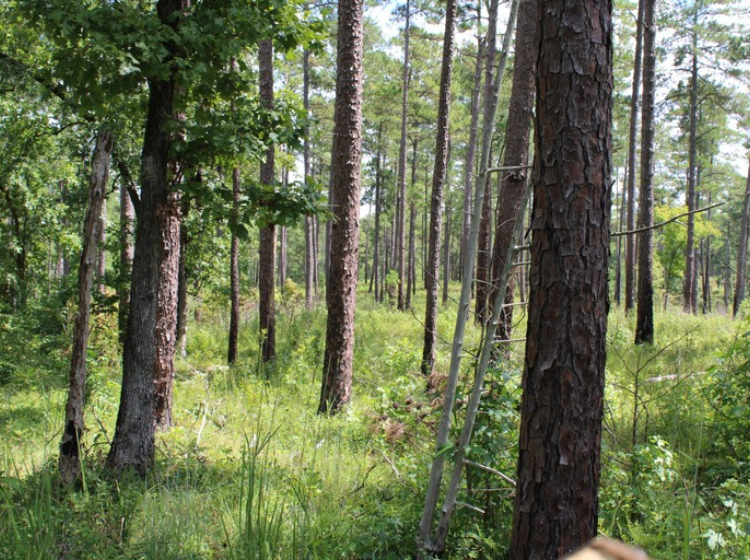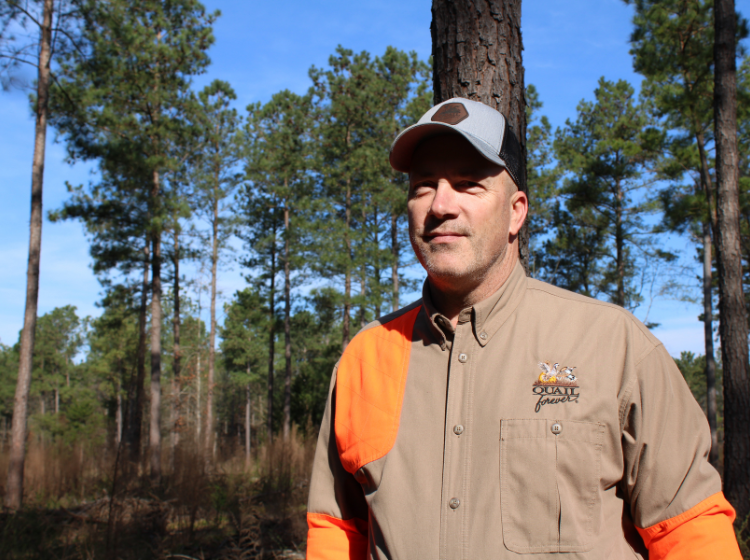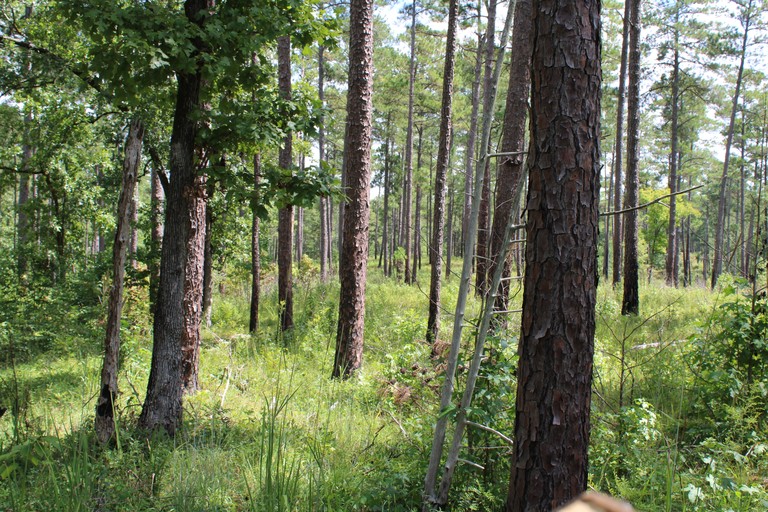Updates & Blog
Quail, Fire and Dedicated Landowners: Restoring South Carolina’s Pine Savannas

Article published originally by the U.S. Department of Agriculture, Forest Service, Francis Marion and Sumter National Forests.
Gunrise Farms is a small hunting preserve in Newberry County, South Carolina, where landscape changes are taking place. Ty Holland, the owner, was drawn to the area because of its proximity to the Sumter National Forest, a focal area for restoring South Carolina’s pine savannas and bobwhite quail populations. Holland is usually busy assisting hunters or fixing farm equipment. However, he has also taken on another important role, conservation.

“I feel, as the owner of a hunting preserve, it is my job, my responsibility, to help restore the land,” said Holland. In three years, Holland has transformed his preserve and the Newberry community, playing a pivotal role in rehabilitating South Carolina’s pine savannas.
Various types of pine savannas are found in the Southeast, including longleaf, shortleaf and loblolly pine. These ecosystems are hybrids between prairies and forests. Scattered trees form an open canopy that allows sunlight to stimulate a flush of grasses and flowers on the forest floor. The mixture of both tree and prairie habitats makes pine savannas particularly biodiverse in both plant and animal species.
Over the past couple centuries, pine savannas have rapidly declined, fueled by wildfire exclusion, land development, and a lack of forest management, historically. Longleaf pine savannas, for instance, once dominated the southeast from Virginia to Texas. Today, they occupy only 4% of their historic range. Dozens of threatened, endangered and regionally unique species depend on these ecosystems, such as the red-cockaded woodpecker, gopher tortoise and indigo snake. Even bobwhite quail, a popular game species, has seen significant population declines, falling by 80% during the 20th century. Recently, however, ecologists have observed bobwhite quail populations rebounding—a sign that pine savanna restoration projects are working.
One of those restoration efforts is taking place on Gunrise Farms. Since 2020, Holland has been busy restoring quail habitats and pine savannas across his 300-acre property. Lacking a wildlife or forestry background, he reached out to the expert staff at the South Carolina Forestry Commission (SCFC) and Quail Forever (QF), a division of Pheasants Forever, a nation-wide bird conservation organization geared toward restoring ecosystems. The SCFC assisted him in developing a forest management plan through the Forest Stewardship Program, which is a collaboration between state forestry agencies and the United States Department of Agriculture, Forest Service. QF biologists helped him focus on quail habitat management, specifically.

“We devoted a lot of land to quail habitat restoration and around 30 acres to woodland savanna restoration. I was really excited about how it would look and how much wildlife it would draw,” said Holland.
Fire and axes—what you might expect to destroy forests—are instead essential tools used by Holland, foresters and biologists to restore pine savannas. “Prescribed burns help remove the young trees that crowd out grasses and rob nutrients from bigger trees,” said Holland. When prescribed burns and other maintenance techniques aren’t administered on a regular rotation, pine savannas can quickly grow into dense, crowded forests. Prescribed burns can also help landowners meet other objectives like controlling fuel to reduce wildfire risk and increasing wildlife forage and cover.
Holland’s efforts are part of a larger, ongoing movement among many stakeholders. In 2004, the Forest Service, the Natural Resources Conservation Service, the South Carolina Department of Natural Resources, and non-profit organizations like QF, pooled resources to establish the Indian Creek Woodland Restoration Initiative (ICWRI). The ICWRI is aimed at restoring approximately 16,000 acres of quail habitat and pine savannas in the Sumter National Forest and surrounding private properties. After successfully restoring 16,000 acres, the USDA Joint Chiefs Landscape Restoration Partnership awarded the ICWRI a $1.4 million grant to restore an additional 40,000 acres.
One obstacle encountered by ICWRI stakeholders is a lack of habitat connectivity—a term biologists use to describe the fragmentation of ecosystems. In other words, one landowner may restore their land but their neighbor may not, creating chunked-off squares and rectangles of recuperated land among unrestored areas. Research shows habitat fragmentation significantly undermines habitat resiliency, biodiversity and wildlife mobility. Therefore, getting as many private landowners to join the effort is essential to project success.
Holland expanded his reach to engage the larger community and address land fragmentation, by establishing a QF chapter in the Midlands Region of South Carolina. “It seemed like a great opportunity to bring more landowners into the effort and a way to improve everyone’s land,” he said. In its first year, the Midlands Chapter hosted several educational events and assisted landowners with restoration projects.
Holland is also a founding member of the Piedmont Prescribed Fire Cooperative (PPFC), an organization of private landowners that assists each other with prescribed burning. Prescribed burns, which are essential to pine savanna restoration, require extensive man hours and expertise. To make prescribed burning and restoration practices safer and accessible to more private landowners, the PPFC shares time, skills and resources to cooperatively apply these burns on private lands. In 2022, the cooperative supervised eight controlled burns.
“The work done by conservation-minded landowners like Holland is crucial to effect change on a broad landscape scale,” said Jestin Clark, wildlife biologist for the Francis Marion National Forest. “The Forest Service recognizes the value of these private lands, and we work across boundaries to help protect and restore lost ecosystems. When we restore pine savannas, we are helping to recover all of those species that rely upon them.”
On Gunrise Farms, Holland said his habitat and pine savanna restoration projects are already paying off and demonstrating how quickly species can recover. “There is so much more wildlife. And we are basically growing quail. We currently have a brood of 50 brand new quail on the property.”
Now, as Holland and landowners begin restoring pine savannas in central South Carolina, their successes and collaboration with the government and organizations provide hope that pine savannas can make a comeback.